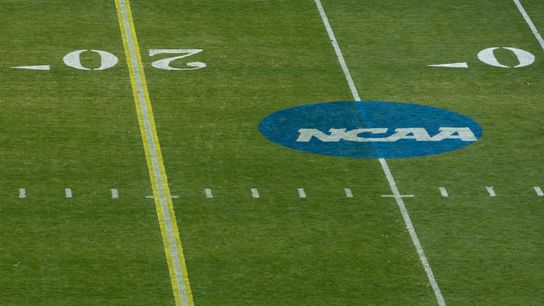The NCAA's transfer rules are going to change. How much, of course, is the question.
The most common, radical change is one sponsored by the Big 12, a proposal that would grant all players a free release to leave and play elsewhere immediately in the event of a coaching change. One of that proposal's talking point is that, yes, this is a radical change, but it's not the most radical change that could happen.
Here was Iowa State AD Jamie Pollard alluding to that earlier this month:
“I’m not saying it’s perfect. No one’s saying it’s perfect, but if we as an industry don’t come up with something, the other is going to happen, and the other has no regard for (a year in residency requirement) and the whole team could transfer and be eligible at another institution immediately. We have to be careful here that we don’t overthink it. What we’ve tried to do is think about the high-level examples of situations where there’s clearly been angst nationally where a student-athlete was blocked from transferring to a particular school or a coach left but the student-athletes couldn’t leave.”
The group in charge of studying the issue and recommending a solution for the entire membership, the Division I Transfer Working Group, spent two days this week huddling at NCAA headquarters in Indianapolis and announced afterward that a transfer free-for-all is not and has never been on the table. From the NCAA's release:
The working group is not considering — and never entertained — a model that would allow all student-athletes to transfer and compete immediately. Member schools noted that such a rule change would not lead to more student-athletes achieving academic success and graduating.
However, the Working Group did not dismiss the Big 12's rule allowing players a free release after a coaching change. It is also considering endorsing an expansion of the graduate transfer rule for certain high-achieving undergrads:
Some exceptions now under consideration include:
- Allow students who meet specific, high-achieving academic benchmarks to play immediately after the first time they transfer during their college experience.
- Allow prospective student-athletes who have signed a National Letter of Intent to transfer and play immediately if a head coach leaves the school of the student’s choice, as well as under other exceptions already in the rulebook. Because the Collegiate Commissioners Association manages the NLI, this idea would be referred to the CCA for consideration.
Either way, the status quo is about to change. Again from the release (emphasis mine):
Additionally, the working group is not considering preserving the current rule or requiring all student-athletes to sit out a year without exception.
The Working Group does not have the power to change rules on its own; it exists to do a deep-dive study of an issue, solicit feedback from membership and then submit a recommendation to the Division I Council, a 38-member committee comprised mostly of ADs and other high-ranking officials.
“Membership input is vital in this process as we try to develop the best recommendation possible,” Working Group chairman and South Dakota State AD Justin Sell said in a statement. “We will refine the concepts based on the feedback we receive, and we will ultimately make our decisions based on our values and goals as an organization and the guideposts set for us last year by the Division I Board of Directors.”
